
Cercocarpus, commonly known as mountain mahogany, is a small genus of at least nine species of nitrogen-fixing flowering plants in the rose family, Rosaceae. They are native to the western United States and northern Mexico, where they grow in chaparral and semidesert habitats and climates, often at high altitudes. Several are found in the California chaparral and woodlands ecoregion.

Claytonia is a genus of flowering plants native to Asia, North America, and Central America. The vitamin-rich leaves can be eaten raw or cooked, and the tubers can be prepared like potatoes.

Tageteae is a tribe of the plant family Asteraceae. It consists of approximately 260 species divided among 32 genera. All are found in the New World, with a center of diversity in the Mexican highlands. The type genus is Tagetes (marigolds).

Brongniartia is a genus of leguminous plants in family Fabaceae. It includes 63 species native to Mexico and Texas and to Bolivia. The genus was first named by Kunth after the French botanist Adolphe Brongniart.
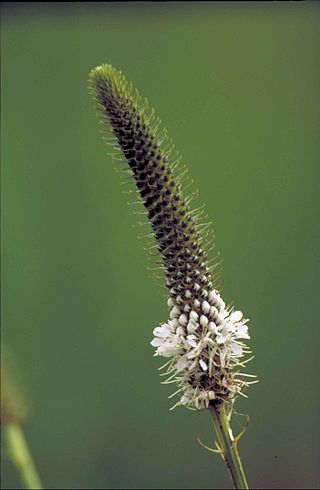
Dalea is a genus of flowering plants in the legume family, Fabaceae. Members of the genus are commonly known as prairie clover or indigo bush. Its name honors English apothecary Samuel Dale (1659–1739). They are native to the Western hemisphere, where they are distributed from Canada to Argentina. Nearly half of the known species are endemic to Mexico. Two species of Dalea have been considered for rangeland restoration.
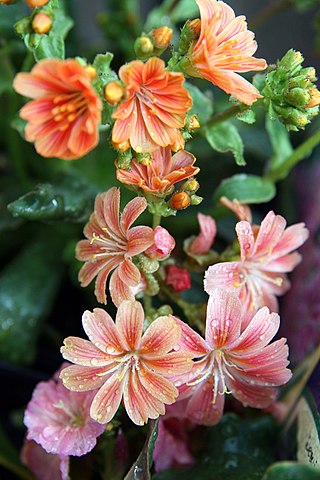
Lewisia is a plant genus, named for the American explorer Meriwether Lewis (1774-1809) who encountered the species in 1806. The native habitat of Lewisia species is rocky ground and cliffs in western North America. Native Americans ate the roots, which have also been used to treat sore throats.

Pectis is a genus of flowering plants in the family Asteraceae described as a genus by Linnaeus in 1759.
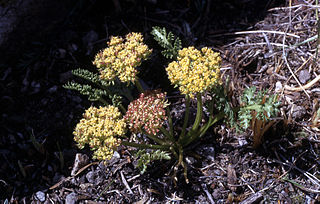
Musineon is a genus of flowering plants in the carrot family Apiaceae, known generally as wild parsleys, though plants of other related genera share that name.
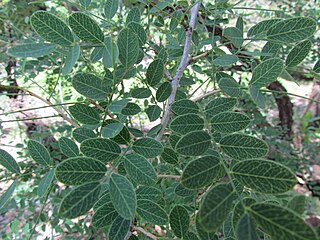
Diphysa is a genus of flowering plants in the legume family, Fabaceae. It belongs to the subfamily Faboideae, and was recently assigned to the informal monophyletic Dalbergia clade of the Dalbergieae. It includes 22 species which range from Arizona through Mexico and Central America to Colombia and Venezuela.

Orbexilum, commonly called leather-root, is a genus of flowering plants in the legume family (Fabaceae). They are native to North America, where they are found in the United States and Mexico, south to Chiapas.
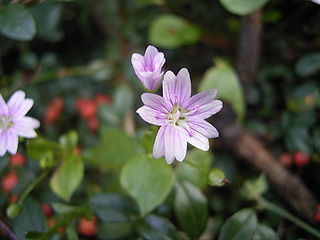
Montiaceae are a family of flowering plants, comprising about 14 genera with about 230 known species, ranging from small herbaceous plants to shrubs. The family has a cosmopolitan distribution.
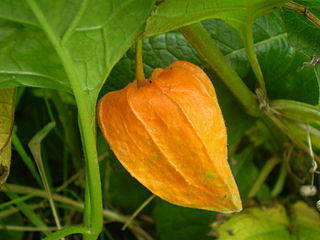
Physaleae is a tribe of flowering plants in the subfamily Solanoideae of the family Solanaceae.

Thelypodiopsis is a genus of flowering plants belonging to the family Brassicaceae.
Telesonix is a genus of flowering plants belonging to the family Saxifragaceae.
Chlorocrambe is a genus of flowering plants belonging to the family Brassicaceae.
Conimitella is a genus of flowering plants belonging to the family Saxifragaceae.
Suckleya is a monotypic genus of flowering plant belonging to the family Amaranthaceae. It only contains one known species, Suckleya suckleyana(Torr.) Rydb.

Elmera is a monotypic genus of flowering plants belonging to the family Saxifragaceae. It contains one species, Elmera racemosa(S.Watson) Rydb..
Giliastrum is a genus of flowering plants belonging to the family Polemoniaceae.














